Using Field Tests to Evaluate the Hydraulic Performance of Existing
Concrete Block Permeable Pavements
November 2020
by Tom Emerton BSc (Hons) GMICE1 and Chris Griffiths2
1Pavement Engineer Manager, Marshalls Plc, 2Engineering Marketing Manager, Marshalls Plc.
Background.
Concrete Block Permeable Paving (CBPP) is an effective SuDS component which provides either
source control infiltration or a controlled flow of clean water. However, there are a number of misconceptions about CBPP technology which impede its uptake and adoption.
CBPP is a block paved surface which allows rainwater to permeate through the surface via widened joints between the blocks. Once in the sub-base, water is stored until it either infiltrates into the ground or, if ground conditions don’t allow infiltration, is channelled away to a receiving watercourse or sewer at a controlled rate. It manages water quantity and also improves water quality, making it an effective (and passive) water management tool.
However, one of the most persistent misconceptions about CBPP is that without maintenance the joints quickly become clogged with debris and within a short period of time the joints will become impermeable and water will be prevented from entering the sub-base.
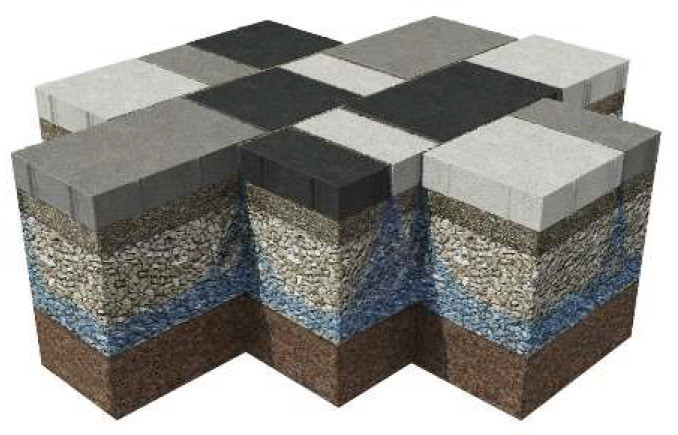
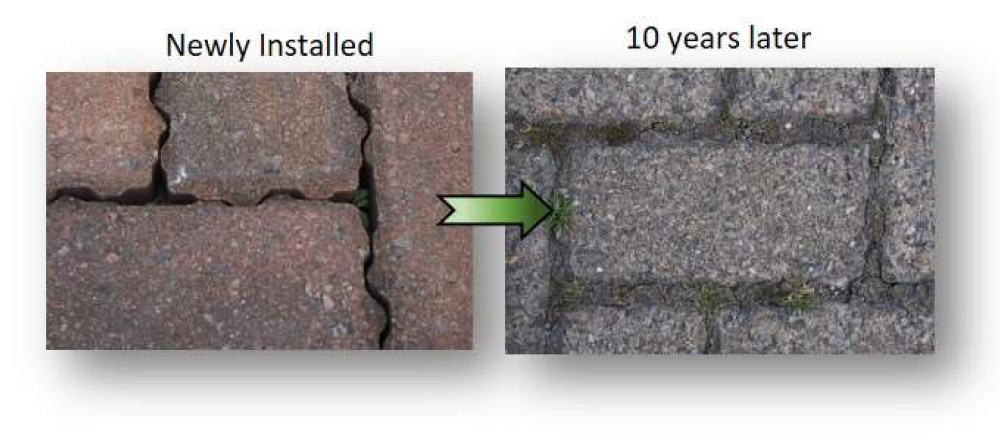
A number of academic studies have disproved this myth. What happens in practise is that sand, dust and debris settle in the joint but form a thin “crust” (approx. 5-10mm deep) over the surface of the joints – and while this crust slows down the rate of infiltration, it still allows water to percolate into the sub-base. Soenke Borgwardt’s 2006 study1 concluded that with no maintenance whatsoever, after 10 years a CBPP system reduces to 10% of its initial infiltration rate and plateaus at this level.
This reduced rate is still more than permeable enough to cope with the heaviest rainfall events, so Borgwardt’s conclusion was that although annual sweeping is desirable to maximise infiltration rates, even with no maintenance whatsoever, a CBPP system will continue to perform at an acceptable level.
In addition, Luis Sanudo-Fonteneda (et al)’s 2017 report2 compares the performance of various permeable surfaces in a car park in Santander, Northern Spain, attempting to ascertain an “end of life” timescale for each system. Again, the study concludes that although the infiltration rate degrades over time, the CBPP surface still performs its drainage function and has yet to reach a state of complete failure.
Despite this evidence, and despite the huge number of still-functioning systems that have been
installed all over the UK, the belief that the surface will fail due to clogging remains the main reason why people avoid specifying CBPP.
Process.
In order to better understand the effect trafficking, weathering and time has on CBPP systems, a number of field tests were undertaken to measure the permeability of existing CBPP systems in the UK, following the American Standard method ASTMC1781/C1781M3.
The process is detailed, but can be summarised as follows:
-
Take a cylinder of a known diameter
-
Using window putty, lay a circular bed on the surface the same diameter as the cylinder. Ensure that extra putty is applied at the joints (Fig 1)
-
Seat the cylinder firmly into the putty, ensuring a tight seal all the way round. (Fig 2)
-
Pre-wetting: Take a known volume of water and slowly pour it onto the surface within the cylinder. Maintain a consistent head of between 10-15mm at all times (Fig 3)
-
Measure the amount of time it takes for all the water to disappear. (Fig 4)
-
Repeat this process for the actual test.
Use the following formula to convert this time into “mm per hour”:
I = KM ⁄ (D2*t)
in which:
I = Infiltration rate (mm/h)
M = Mass of infiltrated water (kg)
D = Inside diameter of infiltration ring (mm)
t = time required for measured amount of water to infiltrate the surface (seconds)
K = 4 583 666 000 in SI units
This process should be carried out at a number of locations across the chosen site and an average
taken.
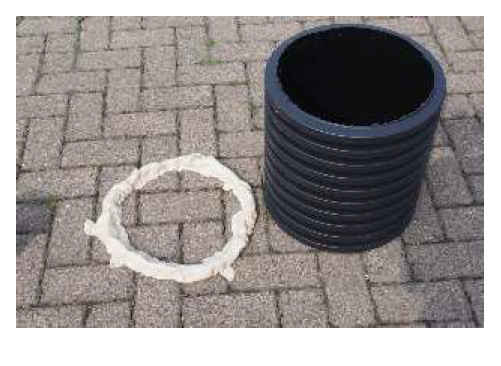
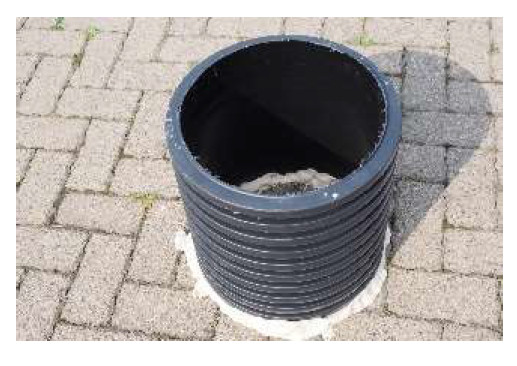
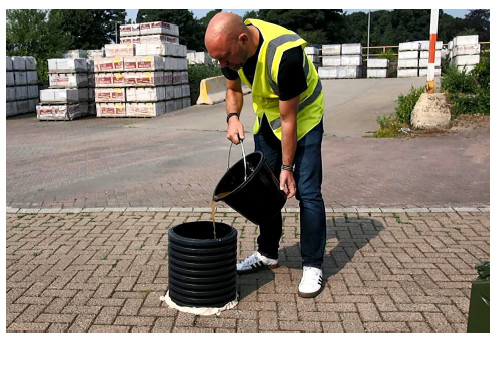
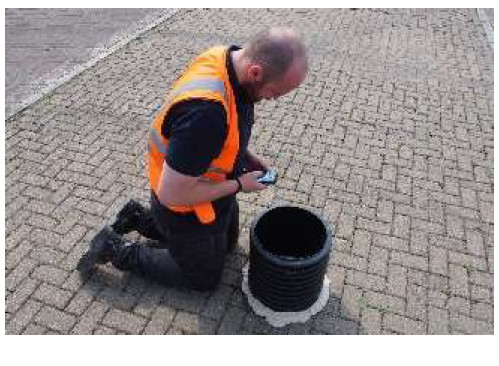
Context.
The infiltration rate of newly installed CBPP is virtually instantaneous; it’s so fast that it’s difficult to measure accurately. Lab tests demonstrate that the infiltration rate is in excess of 6,750 mm per hour.
Changing weather patterns mean that UK rainfall events are increasing in their frequency, duration and intensity. According to Met Office data4, the UK’s wettest day since records began in 1862 occurred on December 3rd 2019, when an average of 31.7mm fell in 24 hours. However, averages are not necessarily useful when designing drainage systems. It is important to recognise that intense “cloudburst” storms can generate significant volumes of rain on a small area in a short space of time.
The Met Office records the following rainfall events as the heaviest in UK history4:

It is useful to recognise that from a hydraulic point of view CBPP is over engineered to be far more permeable than it needs to be – by a factor of 42, against the most intense half-hour storm on record.
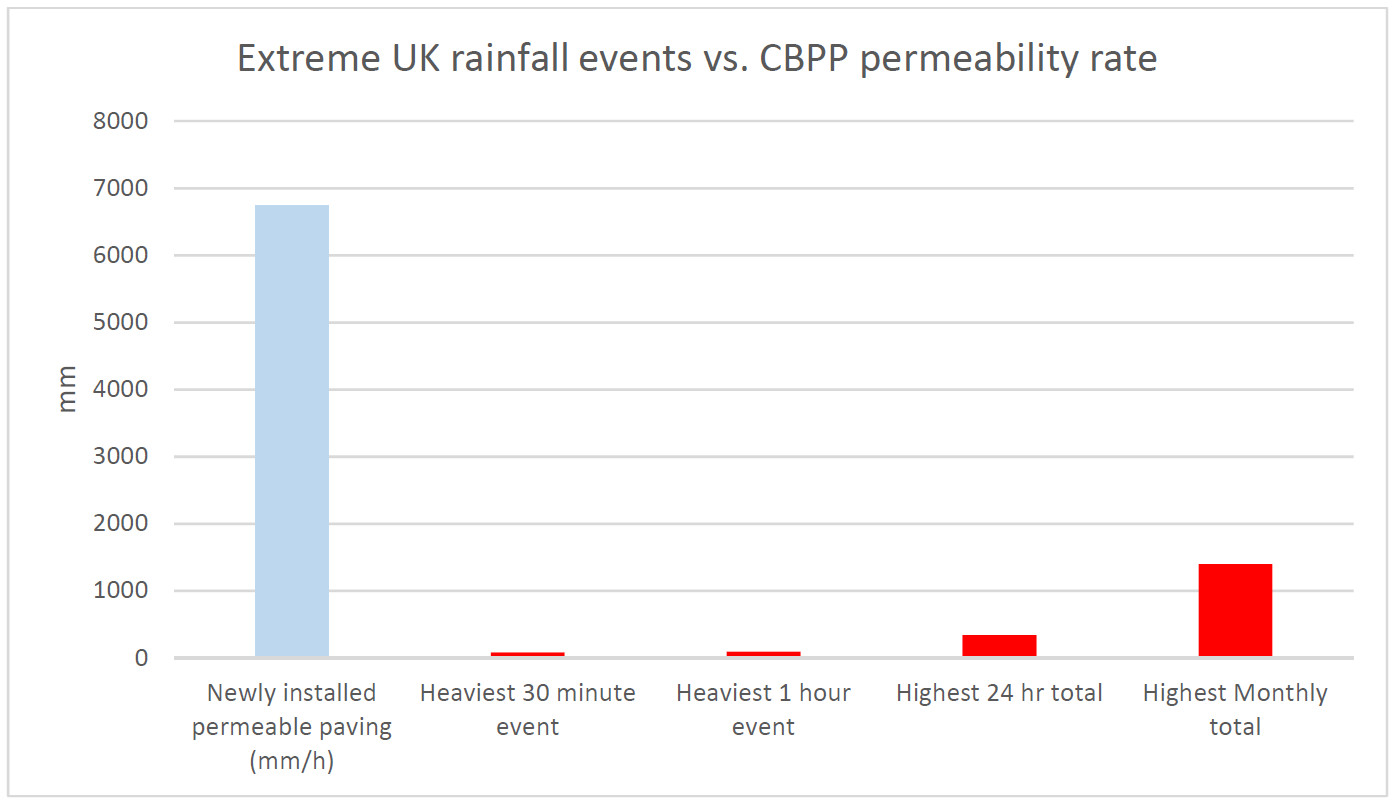
Test Site Locations.
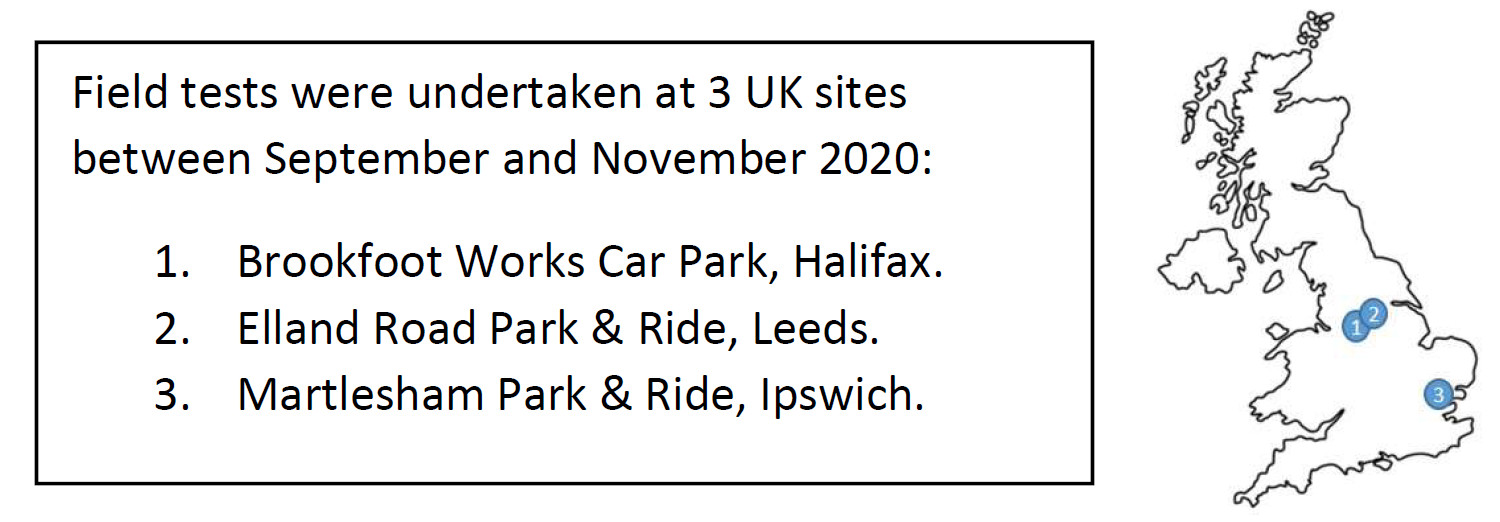
1 -Brookfoot Works Car Park, Halifax, HX3 9SY. Installed 2001.
A test panel (approx. 5mx10m) installed in the exit lane of a car park servicing a concrete works.
The car park is heavily used by 3 daily shifts of factory staff 7 days a week (up to 100 cars daily) and is also subject to heavy plant moving pallets of concrete products and aggregates. No maintenance has been undertaken whatsoever.
The surface is well worn. Most joints have sand and debris in them and some moss is visible.
Some joints appear completely clogged with compacted sand.
2 - Elland Road Park and Ride, Leeds, LS11 0EY. Installed 2014.
A large out-of-town car park next to the football stadium.
Two new phases have been added since this first one, both using CBPP. The car park receives regular daily trafficking from domestic cars. The car park is swept annually and during winter salt is applied (without added grit or sand) as a de-icer.
There is moss and debris visible in most joints in the parking bays, but joints the running lanes seem to be more open. Mossed joints are particularly evident in bays round the edge of the car park. Jointing aggregate is no longer present. Representatives from Leeds County Council were present at the test.
3 - Martlesham Park & Ride, Ipswich, IP5 3QN. Installed 2003.
A large out-of-town car park which receives regular daily trafficking from commuters and shoppers.
Occasional sweeping is undertaken around the edge of the space to tidy up foliage from overhanging vegetation, but otherwise no specific maintenance has taken place.
There is heavy moss in most joints. Towards the edge of the site there are large amounts of loose debris from trees and shrubs. The original designer of the scheme from Suffolk County Council was present at the test.
Approximate Test Locations.
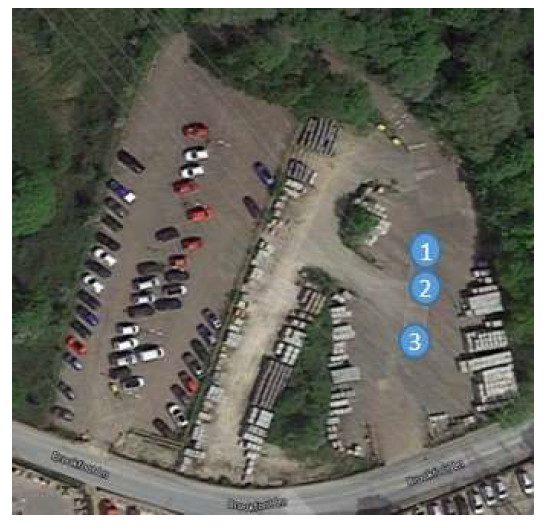
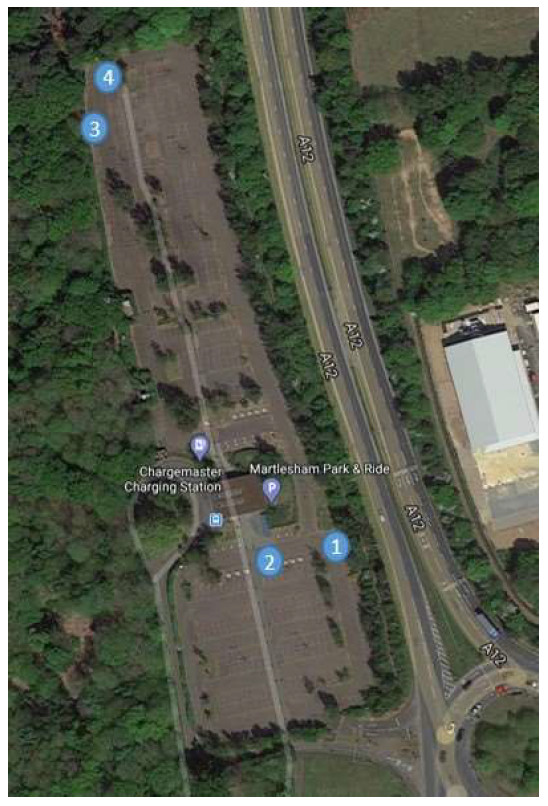
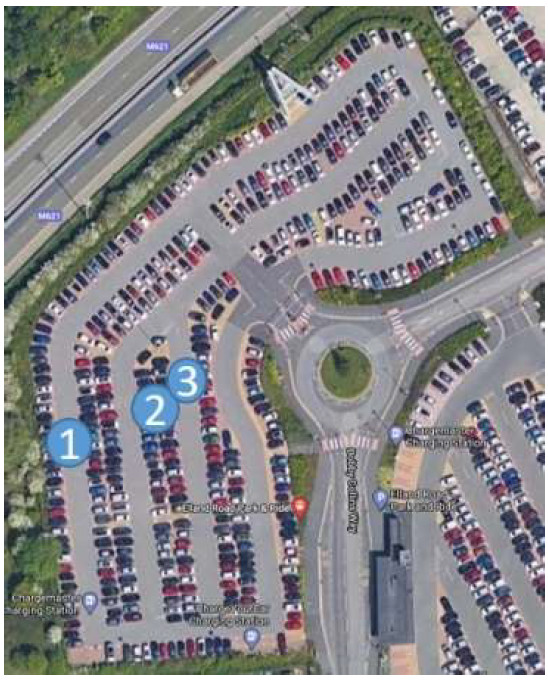
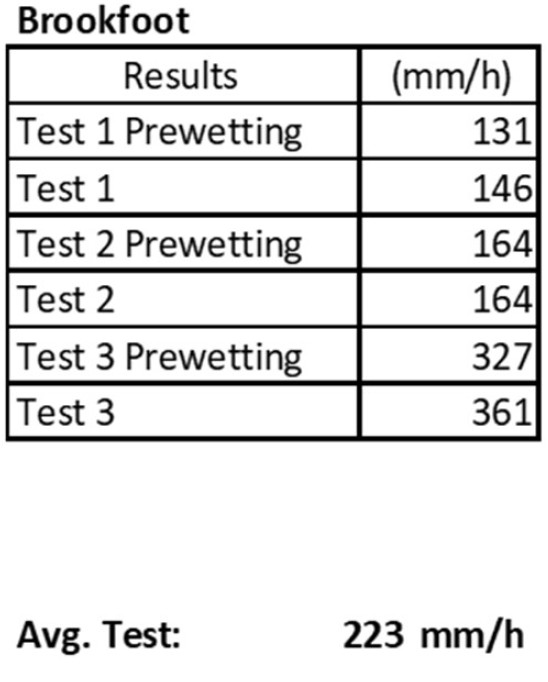
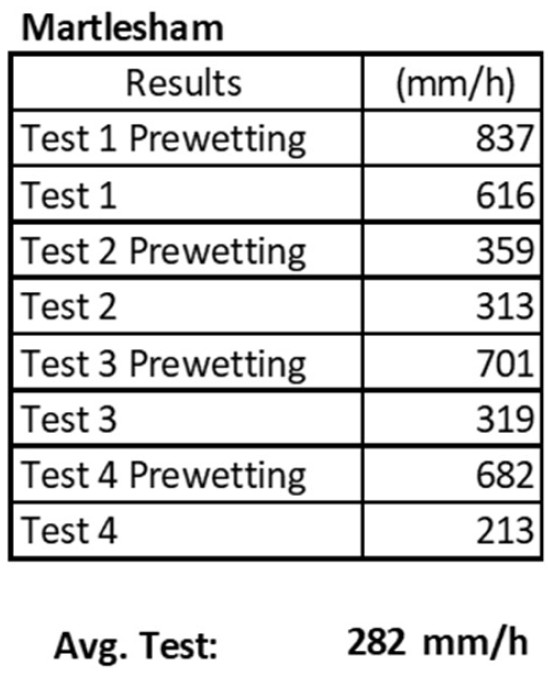
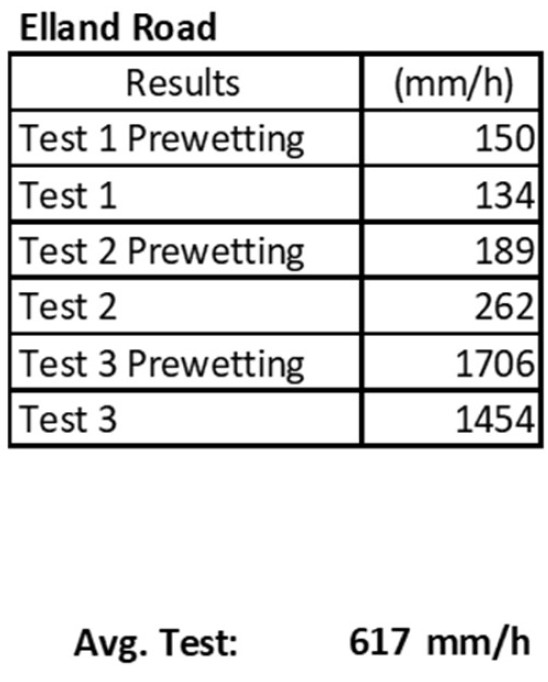
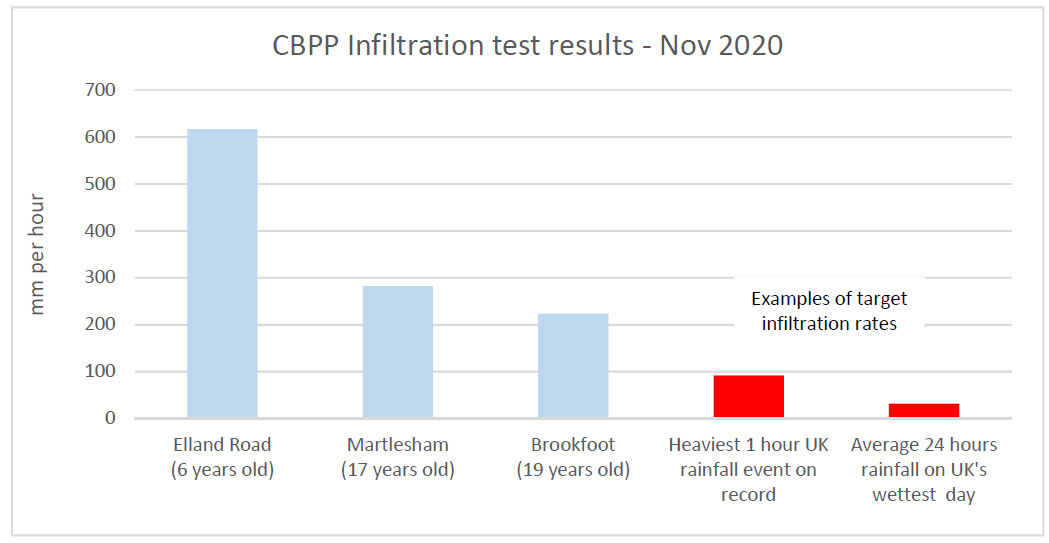
Predictions.
In line with previous research projects, these results demonstrate a decline in permeability over time. Plotting these points onto a graph produces a “degradation curve”, and provides the opportunity to predict the rate at which CBPP permeability might continue to decline:
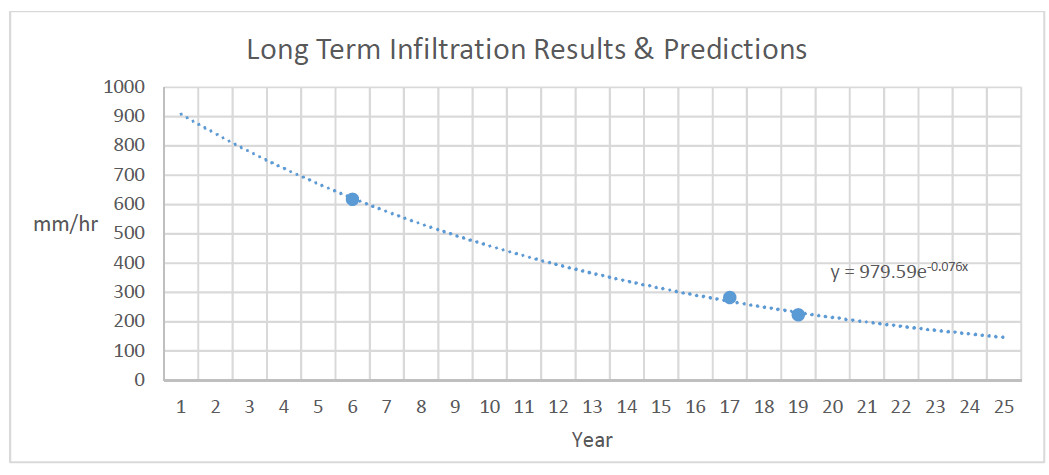
Formula for Predicted Long Term Infiltration:
y = 979.59e-0.076x
y= Predicted Infiltration Rate (mm/hr)
e= Constant value of 2.71828
x= Age of surface in years
Based on this initial data, it would take 32 years before a CBPP surface would no longer be able to cope with the UK’s heaviest 1 hour rain fall event on record.
Conclusions.
Further recommendations.
Although acceptable, it is noted that the infiltration rates tested are far lower than when newly installed. As rainfall events become more intense the need to restore permeability may become necessary. Research should be undertaken into the most suitable method for restoring permeability – eg: sweeping? vacuuming? re-laying? etc etc
The results show that infiltration rates have deteriorated beyond 10% of original value (in the case of Brookfoot, the rate is less than 4% of its original value – although it might have been anticipated that this would the worst performing site, as it is subject to regular industrial plant in addition to domestic cars). Further annual testing should be undertaken at the existing 3 sites to understand if they continue to deteriorate, or if they eventually plateau at an acceptable level.
In order to generate more confidence in predicting the degradation curve, more data is required. Continue to record results in different locations and populate the graph for a more defendable data trend.
It was noticed that on some sites there was marked difference in the permeability of the running courses and car parking bays. Investigate “performance vs application” – eg: regular traffic vs parking bays, industrial plant vs domestic access roads etc.
References:
1 Long-Term In-Situ Infiltration Performance of Permeable Concrete Block Pavement. by Dr Soenke Borgwardt.
2 The Long-Term Hydrological Performance of Permeable Pavement Systems in Northern Spain: An Approach to the “End- of-Life” Concept. by Luis A. Sañudo-Fontaneda, Valerio C. Andres-Valeri, Carlos Costales-Campa, Iñigo Cabezon-Jimenez and Fernando Cadenas-Fernandez.
3 Standard Test Method for Surface Infiltration Rate of Permeable Unit Pavement Systems. - ASTM International
Final Comments:
Not part of the report, but personal thoughts from Chris Griffiths....
Using ASTM permeability tests, we’ve demonstrated that systems up to 19 years old are still working adequately despite receiving zero maintenance. Using our data to forecast future permeability reduction, we think it would take 32 years before a pavement becomes too clogged to cope with the heaviest 1 hour rainfall event in UK history.
We also secured an interview with Simon Curl from Suffolk County Council, who designed one of our oldest schemes 17 years ago. He had some sage advice about various common concerns such as tree roots, services and maintenance: https://youtu.be/KRHUqj-49uA. You can find all of this and more on our SuDS and Permeable Paving resource page.
Obviously we recognise that CBPP isn’t a SuDS magic bullet and that it should only be considered once opportunities for NFM and soft SuDS have been considered – but I would hope that this provides further evidence that CBPP is a useful and pragmatic tool within a holistic WM approach.
